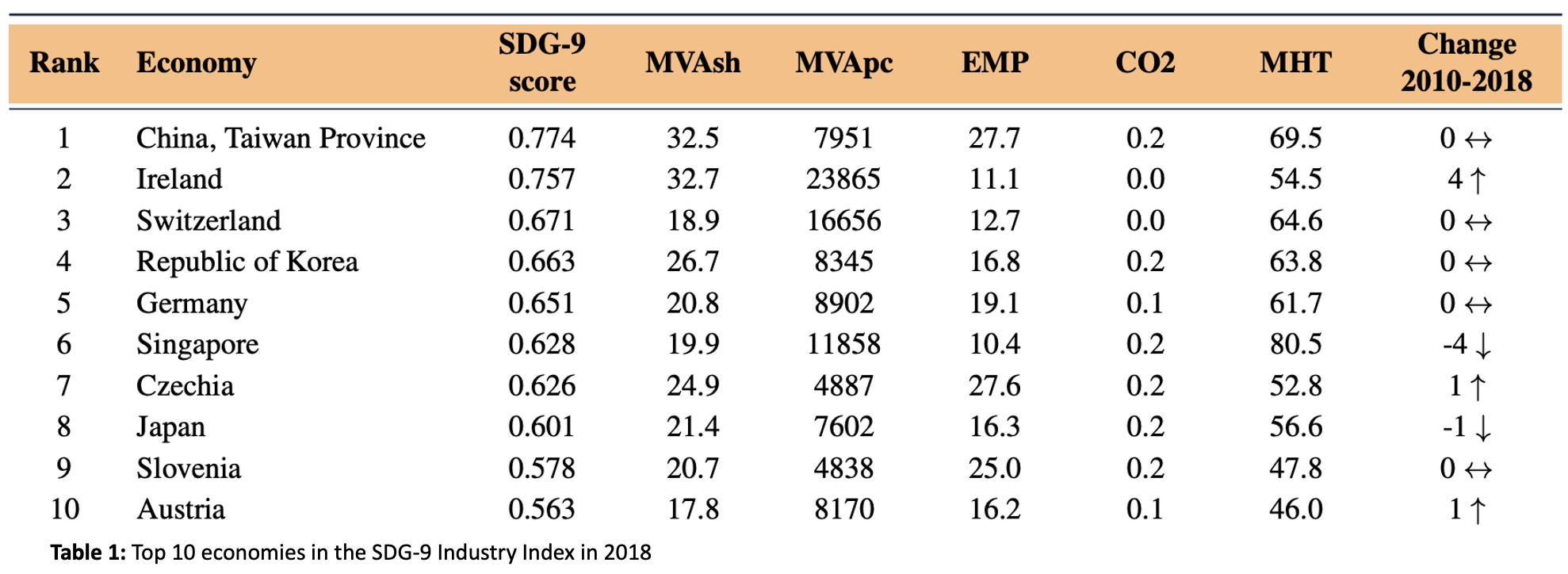

Are we on track to meet the SDG9 industry-related targets by 2030?
11 October 2021

Photo by Uğur Gürcüoğlu on Unsplash
VIENNA, 11 October 2021 - A new report published by the United Nations Industrial Development Organization (UNIDO), Statistical Indicators of Inclusive and Sustainable Industrialization, looks at the progress made towards achieving the industry-related targets of Sustainable Development Goal (SDG) 9 of the UN 2030 Agenda for Sustainable Development. The report is primarily based on the SDG9 indicators related to inclusive and sustainable industrialization, for which UNIDO is designated as a custodian agency, showing the patterns of the recent changes in different country groups.
Six years after the adoption of the 2030 Agenda for Sustainable Development and its 17 SDGs, there has been increasing demand for information on whether the SDG targets could be reached, and what actions should governments take to accelerate progress. The UNIDO report introduces two new tools developed by UNIDO to help countries measuring performance and progress towards SDG9 industry-related targets: the SDG9 Industry Index and SDG9 progress and outlook indicators. The SDG9 Industry Index benchmarks countries' performance on SDG-9 targets over 2000-2018 for 131 economies. In addition, the report develops two measures to answer the main questions:
The global COVID-19 pandemic has inevitably had a negative toll on the progress towards reaching the SDG9 indicators, but the extent of the long-term impact remains to be seen. Industrialized countries continue to dominate global manufacturing industry, but their relative share has gradually declined over the past decade. In 2010, industrialized economies made up 60.3% of global production, which has decreased to 50.5% in 2020. China has been the largest manufacturer, now accounting for 31.7% of global production. This is a trend that has been reinforced by the pandemic.
Progress for the least developed countries (LDCs), at the heart of the 2030 Agenda, is a different story. While economic theory and countries’ experiences across the world have established that industrialization is an engine of sustainable growth, progress among LDCs remains very diverse. Asian LDCs are poised to double their share of manufacturing in GDP and thus meet SDG target 9.2, but African LDCs have stagnated.
SDG9 Industry Index
The SDG-9 Industry Index, consisting of five dimensions, covers three targets and five indicators and assigns a final score to countries. In 2018, the top ten consisted of exclusively industrialized economies, with Taiwan, Province of China, Ireland, Switzerland, the Republic of Korea and Germany making up the top five. In general, industrialized economies perform best in all dimensions of the Index.

The countries at the bottom of the ranking are LDCs, in particular those located in sub-Saharan Africa. Although some African countries have been displaying impressive growth rates, growth has been driven by an extended commodity boom and foreign capital inflows, while industrialization and structural transformation have stagnated. Additionally, substantial data is lacking for a significant amount of the countries. In the SDG9 Industry Index, only 24 out of 54 African countries are included, from which only eight are LDCs. It is clear that national statistics offices need strengthening, as data availability helps countries formulate, review and evaluate their development plans and programmes.

The full report is available here.
Data can be downloaded through the UNIDO Statistics data portal.
Explore your country’s performance through the UNIDO’s SDG-9 Industry Tracker available online at the UNIDO Industrial Analytics Platform (IAP).